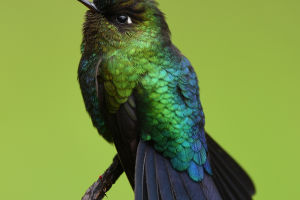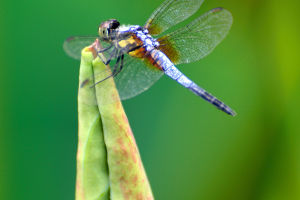Kestrels are the national bird of Belgium. They eat large insects, birds, and small mammals.
The coloration of kestrels varies between the sexes, with males being more vividly colored, which is rare among hawks.
Kestrels often hover in the air, searching for mice, finch-like birds, frogs, lizards, squirrels, snakes, and other small vertebrates on the ground, and also eat locusts, grasshoppers, crickets, and other insects.
Kestrels hunt in the daytime, mainly in the air search, or in the air flying into the wind, or low altitude flight to search for prey, often flapping two wings in the air for a short time to observe the prey, once the target is locked, it will close both wings and swoop down directly on the prey, and then quickly rise to high altitude.
Sometimes they stand high on cliffs and rocks, or on top of trees and poles, waiting for their prey to appear and swoop in.
Kestrels usually like to move alone, especially in the evening when they are most active. It is a strong flyer and likes to fly against the wind, and can quickly stop in the air with its wings raised.
The kestrel inhabits various habitats such as mountain forests, forest tundra, low hills, grasslands, open fields, forest plains, farmland, and near villages, especially in forest edges, forest clearings, sparse forests, and open fields with sparse tree growth, river valleys, and farmland areas are more common, but rare in dense forests.
Migration often occurs in small groups, especially in the fall. They begin their daily activities at dawn and fly with both wings stirring rapidly, occasionally making short glides.
When roosting, they are mostly found in open areas on isolated tall trees or utility poles. The call is monotonous and shrill, much like the sound of a ringing bell.
The breeding period is from May to July. When breeding in the city, kestrels like to rob the nests of magpies and crows or use their old nests. If they can't get a nest, they have to build their nests.
In the wild, they tend to nest in holes in cliffs or tree caves, while for kestrels living in cities, man-made structures provide them with suitable nesting sites.
The nests they build themselves are quite rudimentary, sometimes with little to no nesting material, and they lay their eggs directly on the ground on the roof of a building against a wall.
Kestrels generally lay three to six eggs in a clutch, and generally cannot raise all of them until they leave the nest, and in some cases, all of them are lost.
The female incubates the eggs, with the male standing guard nearby. After the chicks hatch, both parents hunt and feed them together. Most young kestrels die before they reach two years of age, and only a small percentage survive past one year of age.


